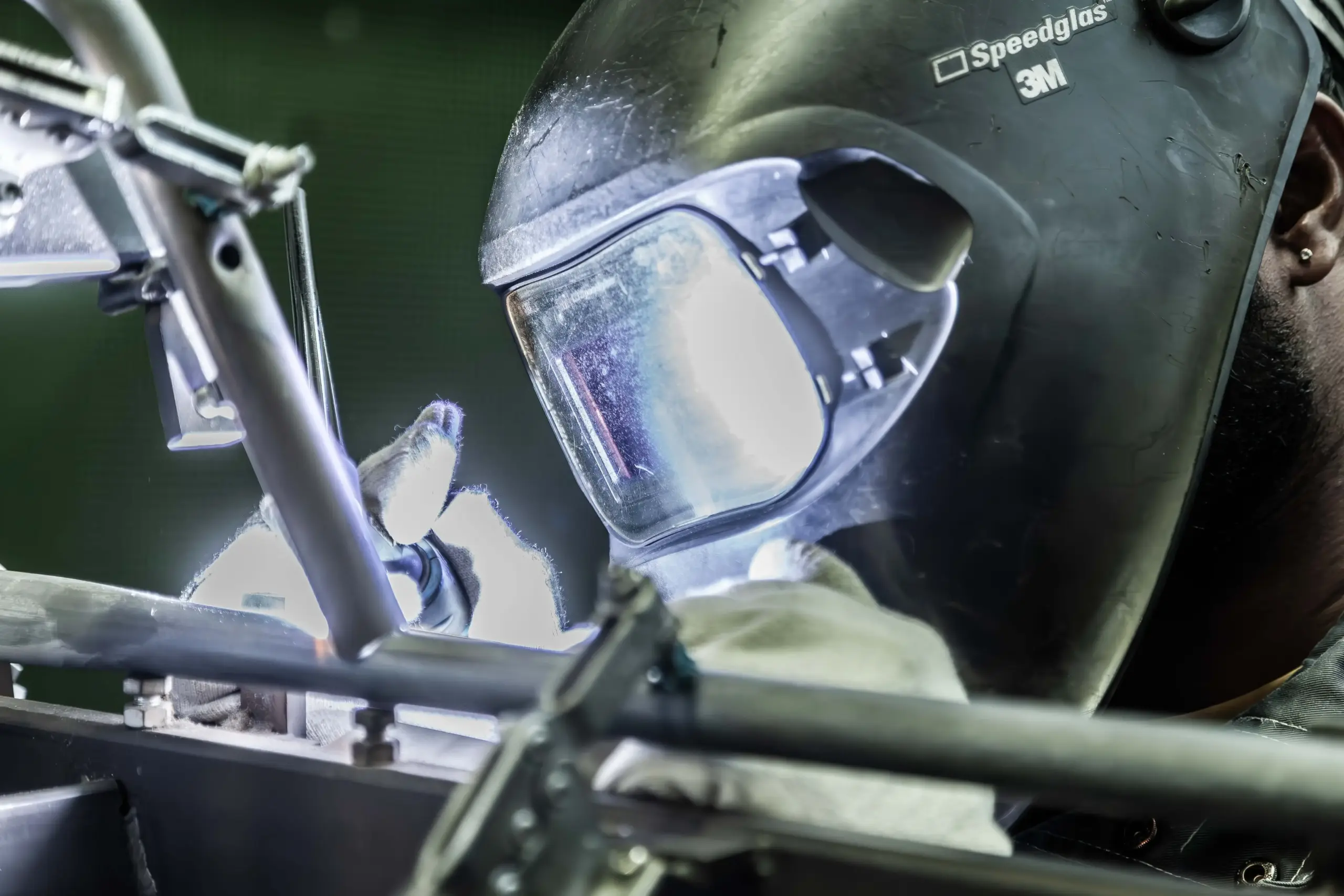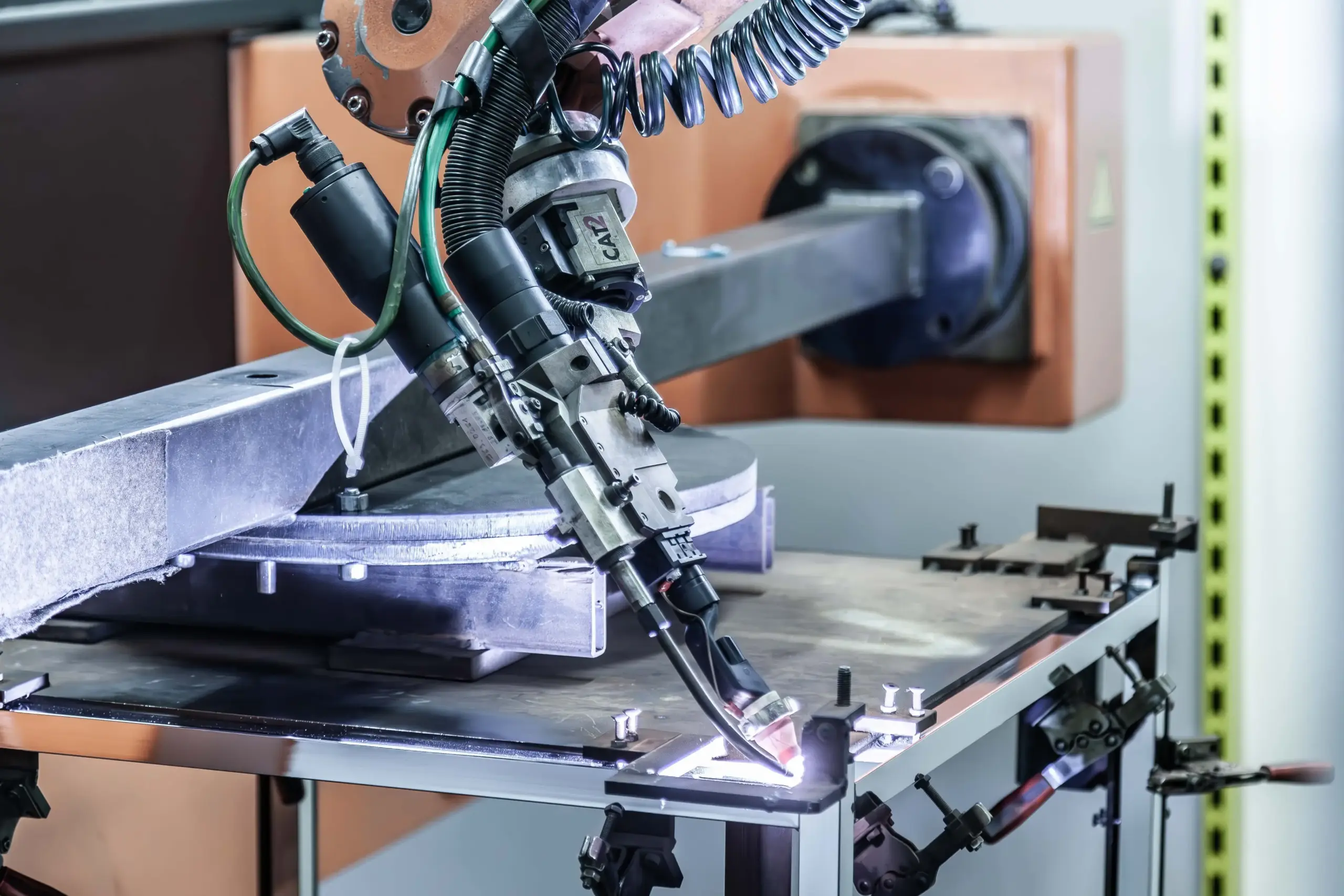Blog
TIG Welding Process
For fine seams on demanding materials
LMV BLOG – Lauingen August 13, 2025
TIG welding (Tungsten Inert Gas welding) is one of the most precise methods for joining metals. Especially for components with the highest quality requirements – such as in shopfitting, furniture manufacturing, or high-quality design components – the process impresses with clean, spatter-free seams and excellent control over the welding process.
1. Key Facts at a Glance
- TIG welding enables clean, high-precision welds without spatter.
- It is ideal for thin-walled materials and high-alloy steels, aluminum, or titanium.
- The heat can be precisely controlled – ideal for delicate applications.
- Particularly suitable for welds with high aesthetic demands.
- LMV uses this process in the manufacturing of technical components and design parts.
2. What is the TIG Welding Process and Why is it Relevant?
TIG welding uses a non-consumable tungsten electrode. The arc heat is concentrated and transferred to the workpiece via the shielding gas (usually argon). This creates a precise melt pool, into which filler material is manually added if required.
The process is particularly controllable, clean, and material-friendly – ideal for components where quality, aesthetics, and repeatability are crucial.
3. The Process in Detail – How TIG Welding Works at LMV

Step 1 – Preparation and Cleaning
Workpieces are precisely prepared and cleaned of residues. Precision begins with the setup.
Step 2 – Positioning and Fixturing
The components are precisely positioned and – if necessary – secured with welding fixtures.
Step 3 – Welding Process with Tungsten Electrode
The arc is ignited manually or automatically, the shielding gas protects against oxidation. The filler material is precisely fed.
Step 4 – Visual Inspection & Quality Control
The seam is visually and usually non-destructively inspected. If required, further post-processing steps follow.
4. Advantages of the TIG Welding Process
-> Highest Seam Quality – ideal for safety-critical applications
-> Excellent Control over heat input and seam formation
-> No Spatter, no slag – minimal post-processing
-> Visually Clean Seams – ideal for visible areas
-> Versatile Application – from low to high-alloy structural steels and non-ferrous metals
5. Practical Example – TIG Welding in Shopfitting & Furniture Manufacturing

Initial Situation
A manufacturer of high-quality shop fittings is looking for a solution to stably, visually cleanly, and precisely connect delicate metal frames, supports, and design components – e.g., for shelves, counters, or furniture with visible metal structures.
Approach
LMV relies on the TIG welding process to cleanly weld support profiles made of steel, corrosion-resistant steel, or aluminum – without spatter, with precise seam guidance. This is particularly crucial for visible components where post-processing should be minimized.
Result
The components impress with clean welds, high strength, and a high-quality aesthetic appearance – ideal for use in sales rooms, showrooms, or design furniture.
Added Value for the Customer
Thanks to TIG welding, customers receive durable, visually appealing metal components that integrate harmoniously into high-quality interior design concepts – without visible distortion marks or extensive post-processing.
Request a non-binding consultation.
6. Typical Challenges and How LMV Masters Them
| Challenge | LMV’s Solution |
|---|---|
| Distortion in thin-walled components | Precise heat regulation and clamping devices |
| Weld seam irregularities in complex geometries | Manual fine-tuning by experienced specialists, state-of-the-art welding technology |
| Aesthetic requirements for visible seams | Precise post-processing, polishing, and documented visual inspections |
